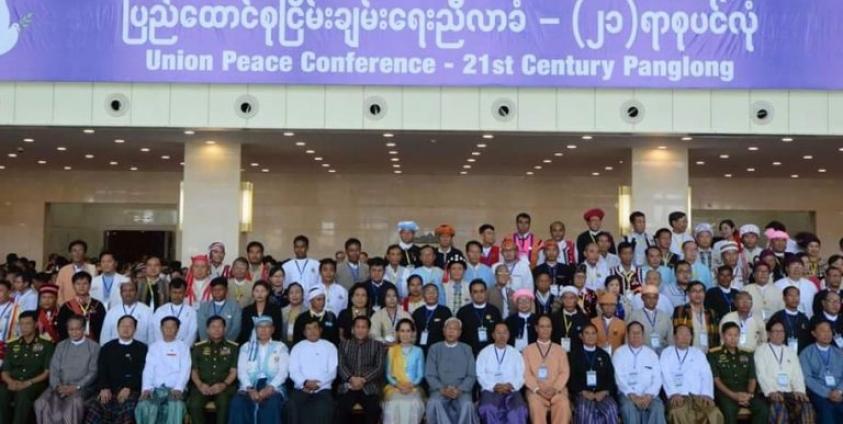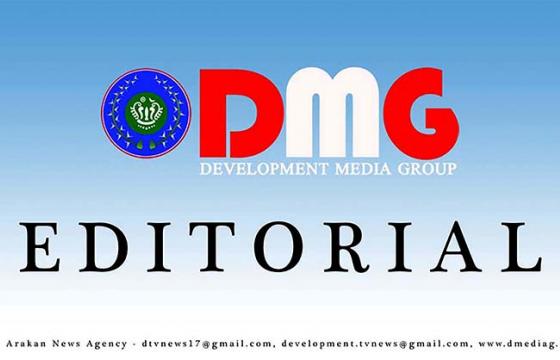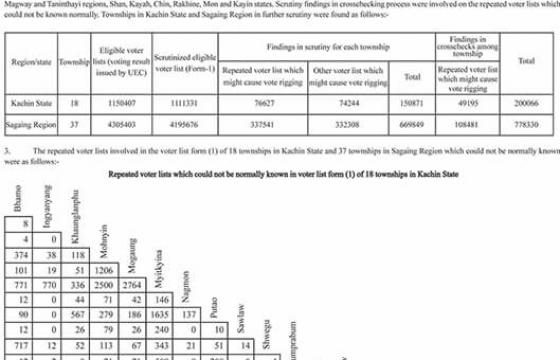There is a once-in-a-lifetime political moment unfolding around us, as the people of Myanmar (Burma) strike for a new status quo of politics and peace. Many of our leaders are fighting for their humanity, regardless of race, gender, religion, ethnicity, culture and tribe. After decades of marginalization, resistance leaders and armed ethnic groups have been given a voice to share their alternative political views with the nation and the world at the 21st Century Panglong Peace Conference from may 24 to 29.
Minority ethnic leaders, democracy activists, legislators and the military have all seen their claims of legitimacy and leadership challenged. Leaders who had long claimed to represent the people have been confronted by those very people.
Some 1,400 representatives from the government, parliament, military, political parties, armed ethnic organizations and civil society participated in the peace talks. The 15 armed ethnic organizations central to the event included eight signatories and seven non-signatories to the Nationwide Ceasefire Accord (NCA). With the whole country watching, the 1,400 representatives had the moral, legal and political mandate to pursue peace for the welfare of their fellow citizens, security, and interethnic harmony and coexistence.
The conference—and with it the national discourse—was dominated by debates over a federal army, constitutional changes and the right to secession. Both the causes and features of the last half century of conflict were on the table and manifested in clashing ideologies. Representatives to the peace conference have the difficult task of reimagining the three pillars of governance into a system that works for all people. Everything else will be cosmetic if the representatives do not address the underlying legitimacy and structures of power. Without addressing legislative, judicial and executive structures, there will be no way to find a comprehensive solution.
Until now, the fundamental principles of a union or federation have never been articulated in the political frameworks. While there was a fleeting discussion from the birth the country in 1947 until 1961, it was cut short by the coup the following year. A new movement for federalism was built in the Karen Army’s jungle headquarters in the 1970s and spread among dissidents through an underground press.
Myanmar marks Union Day every February 12 to celebrate the unity of the Burman and minority ethnic peoples. The question of unity has been debated from different historical perspectives among Burman and non-Burman leaders and writers. After fifty years of searching the model of governance, cooperative federalism has emerged as a broadly desirable system for the country.
The Union will be its best when our old and new leaders respect each group’s cultural identity, language, land, and right to self-government. Democratic principles can be fostered when our leaders share a common vision, of human rights and standards based on the value and dignity of all people.
In considering the ongoing debate, it is important not to stay within the conventional boundaries of the colonial or independence periods. We must go back further, to examine the political landscape of Myanmar prior to British rule. The Mon people have lived in lower Burma since before the arrival of Burman people to Yangon (Rangoon), Mawlaymine (Moulmein), Myeik (Mergui) and the Irrawaddy Delta in the early 5th century A.D. The Mon people have been oppressed for over 260 years under Burman and then British rule, but the aspiration for freedom and legitimacy has never diminished in the mindset of the Mon people. The Mon people’s right to self-rule must be addressed in the peace process because a true understanding of the current conflict must include a reckoning with this history in order to foster a stronger union.
The current disagreement at the peace conference stems from not just ideological difference, but also the history of oppression and exclusion since independence. So while the military claims to be fighting ethnic peoples for the “non-disintegration of the Union,” there is no ignoring the fact that the Union has never truly existed. It has been dominated for 50 years by the Burman ethnic group and has never been responsive to other peoples.
The idea that Myanmar is a real union as claimed by Burman civilian and military leaders is little more than propaganda. The five states that were created by the 1947 constitution and the two new states formed in 1974 have never enjoyed representative government. Even the small concessions to minority ethnic people in the 1947 Panglong Conference fell short, as the process excluded many of the ethnic groups from Lower Bruma, like the Mon, Karen and Arakan. Residents have lived in constant fear of armed conflicts between the military and ethnic resistance groups, and the forced conscription and abuses that the fighting entailed. Many of these native people were forced to flee their homes to seek protection in Thailand, India and other neighbouring countries. There are an estimated two million Burmese people living on the Thai border, both legally and illegally.
Burma’s ethnic people have never been granted local administrative power, and the cabinet and parliament are dominated by 25% of seats awarded to the very military fighting them. Freedom of expression is limited by parliamentary procedure—even when minority ethnic members are elected to parliament, they struggle to have their voices heard because of strict procedures. The cosmetic union that has existed does not provide any of the benefits that a truly federal system would, such as healthcare, education, social welfare, security and environmental stewardship.
Australian National University’s Burma observer Nicholas Farrelly’s warned in Beyond Burma’s Stalemates that “what we now need to acknowledge it that the military leadership has crafted a political and economic system that will likely endure well after elections are regularised. Their anticipation is that our lack of attention to Burma ensures that the military and its civilian proxies will be quietly encouraged to continue ruling the country.” In truth, the ruling generals manipulate the spirit of the Union to label anyone who objects to their exploitative military state as anti-union. But it is the minority ethnic leaders who have been seeking greater local autonomy for six decades that truly embody unionism.
As the new peace process and framework for political settlement are discussed by the representatives to the peace talks, the aspiration to true unionism should be applauded. But using military pressure to somehow strengthen the Union will not work and should be condemned at all levels of the social and political arena.
At the opening ceremony of the 21st Century Panglong Peace Conference, the commander-in-chief of the military, Senior General Min Aung Hlaing said “The Tatmadaw remains committed to trying to secure peace throughout the country via the mechanisms agreed to in the NCA, including building a democratic federal Union based on the results of political dialogues. The Tatmadaw remains loyal to the state and to the people, and the Tatmadaw’s ‘six-point peace policy’, which requires ethnic armed groups accept the 2008 constitution, and agree to disarm.” While he may have claim to want to work together with ethnic groups, his tone was not one of trust building, cooperative federalism, or power sharing.
The Burman leadership has been given many opportunities to create a durable peace for over six decades. Needless to say, Burman hardliners have not taken it. Military elites must ask themselves whether forcing a spirit of unionism through military means can possibly bring a durable peace, stability and prosperity. I would argue that the answer is clearly no. Only a genuine dialogue and political consensus built between the regime and non-elected armed and political forces can ever hope to achieve true unity.
True unity for the Union of Myanmar can only be achieved when there is universal respect for all ethnicities and cultures, and all people can participate meaningfully in the national political life of the country. The dream of a strong and peaceful Myanmar will only be achieved with this spirit, embodied in strong institutions born out of a constitution that guarantees self-determination to all minority ethnic people as a Federal Union of Myanmar.
In conclusion, let’s us reflect the wisdom of an early national leader, Myanmar’s first president, Sao Shwe Thaike. In his first address to the new country on the day of independence, he said “it is unity which has brought our struggle for independence to this early fruition, and may unity continue to be the watchword for every member of the sovereign, independent republic to be henceforth known as the Union of Burma.”
If we bare these words in mind, we can see that the current discord over a federal army, non-cession and constitutional amendments, are small symptoms of the long breakdown in unity. Let us restore that old unity that Sao Shwe Thaik described and begin to rebuild a true union.






